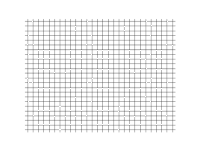Jerk (physics)
In physics, jerk (also known as jolt) is the rate of change of an object's acceleration over time. It is a vector quantity (having both magnitude and direction). Jerk is most commonly denoted by the symbol j and expressed in m/s3 (SI units) or standard gravities per second (g0/s).
As a vector, jerk j can be expressed as the first time derivative of acceleration, second time derivative of velocity, and third time derivative of position:
Human body position is controlled by balancing the forces of antagonistic muscles. In balancing a given force, such as holding up a weight, the postcentral gyrus establishes a control loop to achieve the desired equilibrium. If the force changes too quickly, the muscles cannot relax or tense fast enough and overshoot in either direction, causing a temporary loss of control. The reaction time for responding to changes in force depends on physiological limitations and the attention level of the brain: an expected change will be stabilized faster than a sudden decrease or increase of load.
To avoid vehicle passengers losing control over body motion and getting injured, it is necessary to limit the exposure to both the maximum force (acceleration) and maximum jerk, since time is needed to adjust muscle tension and adapt to even limited stress changes. Sudden changes in acceleration can cause injuries such as whiplash.[2] Excessive jerk may also result in an uncomfortable ride, even at levels that do not cause injury. Engineers expend considerable design effort minimizing "jerky motion" on elevators, trams, and other conveyances.
For a constant mass m, acceleration a is directly proportional to force F according to Newton's second law of motion:
In classical mechanics of rigid bodies, there are no forces associated with the derivatives of acceleration; however, physical systems experience oscillations and deformations as a result of jerk. In designing the Hubble Space Telescope, NASA set limits on both jerk and jounce.[3]


